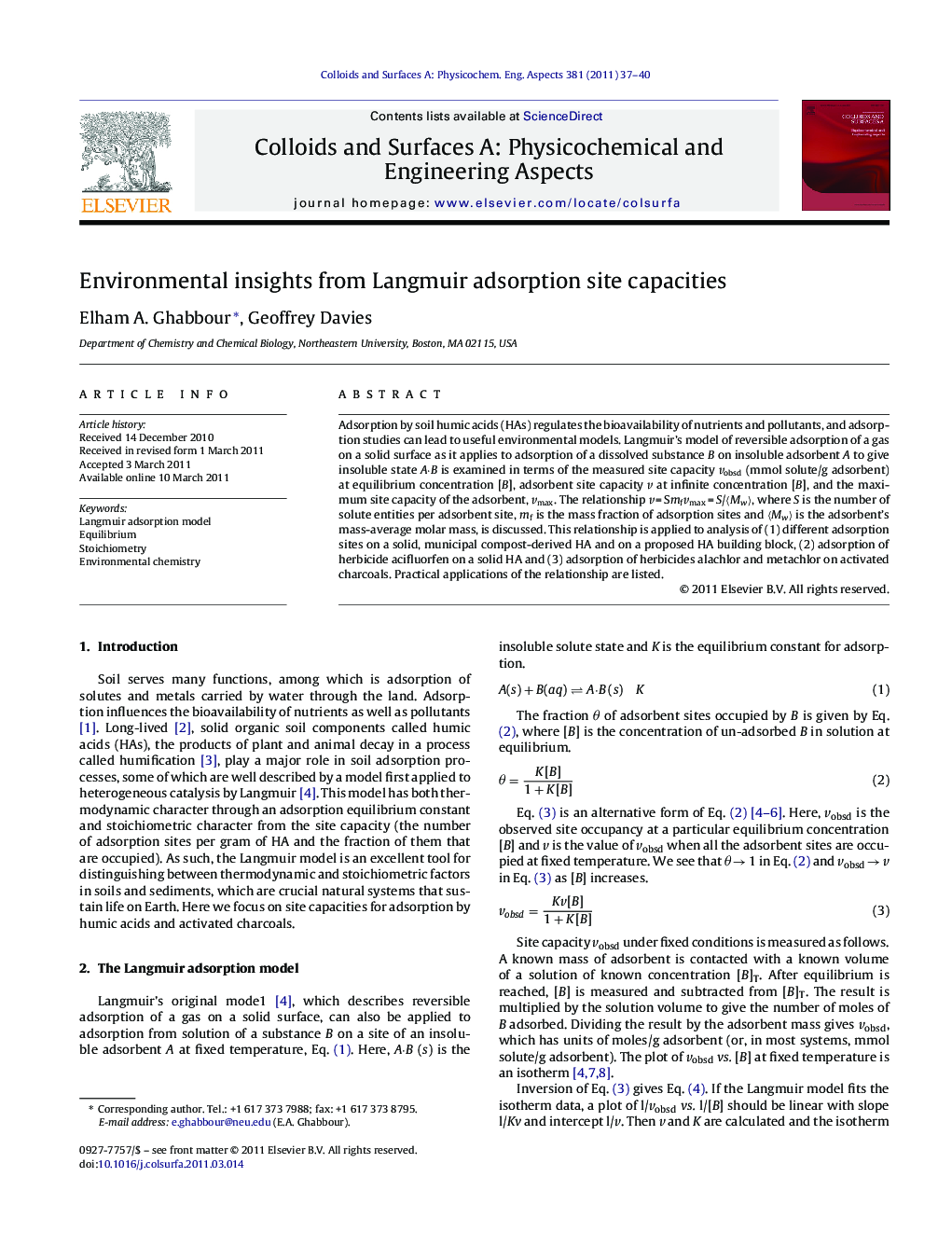| کد مقاله | کد نشریه | سال انتشار | مقاله انگلیسی | نسخه تمام متن |
|---|---|---|---|---|
| 594875 | 1453991 | 2011 | 4 صفحه PDF | دانلود رایگان |

Adsorption by soil humic acids (HAs) regulates the bioavailability of nutrients and pollutants, and adsorption studies can lead to useful environmental models. Langmuir's model of reversible adsorption of a gas on a solid surface as it applies to adsorption of a dissolved substance B on insoluble adsorbent A to give insoluble state A·B is examined in terms of the measured site capacity vobsd (mmol solute/g adsorbent) at equilibrium concentration [B], adsorbent site capacity v at infinite concentration [B], and the maximum site capacity of the adsorbent, vmax. The relationship v = Smfvmax = S/〈Mw〉, where S is the number of solute entities per adsorbent site, mf is the mass fraction of adsorption sites and 〈Mw〉 is the adsorbent's mass-average molar mass, is discussed. This relationship is applied to analysis of (1) different adsorption sites on a solid, municipal compost-derived HA and on a proposed HA building block, (2) adsorption of herbicide acifluorfen on a solid HA and (3) adsorption of herbicides alachlor and metachlor on activated charcoals. Practical applications of the relationship are listed.
Figure optionsDownload as PowerPoint slideHighlights
► Langmuir model fit of aqueous solute adsorption on a solid humic acid (HA).
► Model generates distinct adsorbent site capacity parameters vobsd, v and vmax.
► Relates v to vmax and the adsorbent mass-average molar mass.
► Applied to adsorption on a proposed HA building block.
► Herbicides adsorption on activated charcoals interpreted.
Journal: Colloids and Surfaces A: Physicochemical and Engineering Aspects - Volume 381, Issues 1–3, 20 May 2011, Pages 37–40